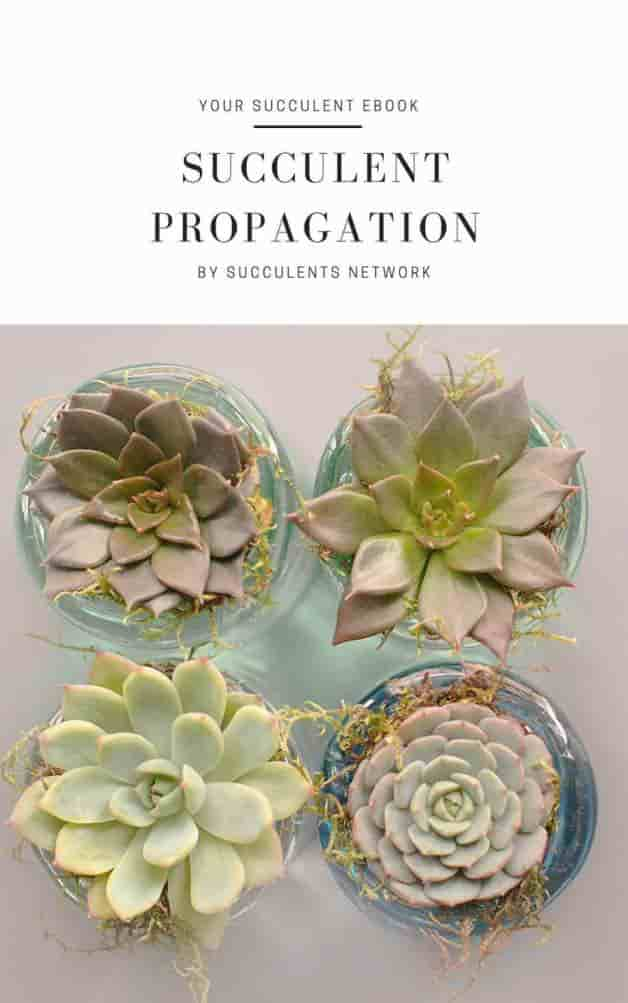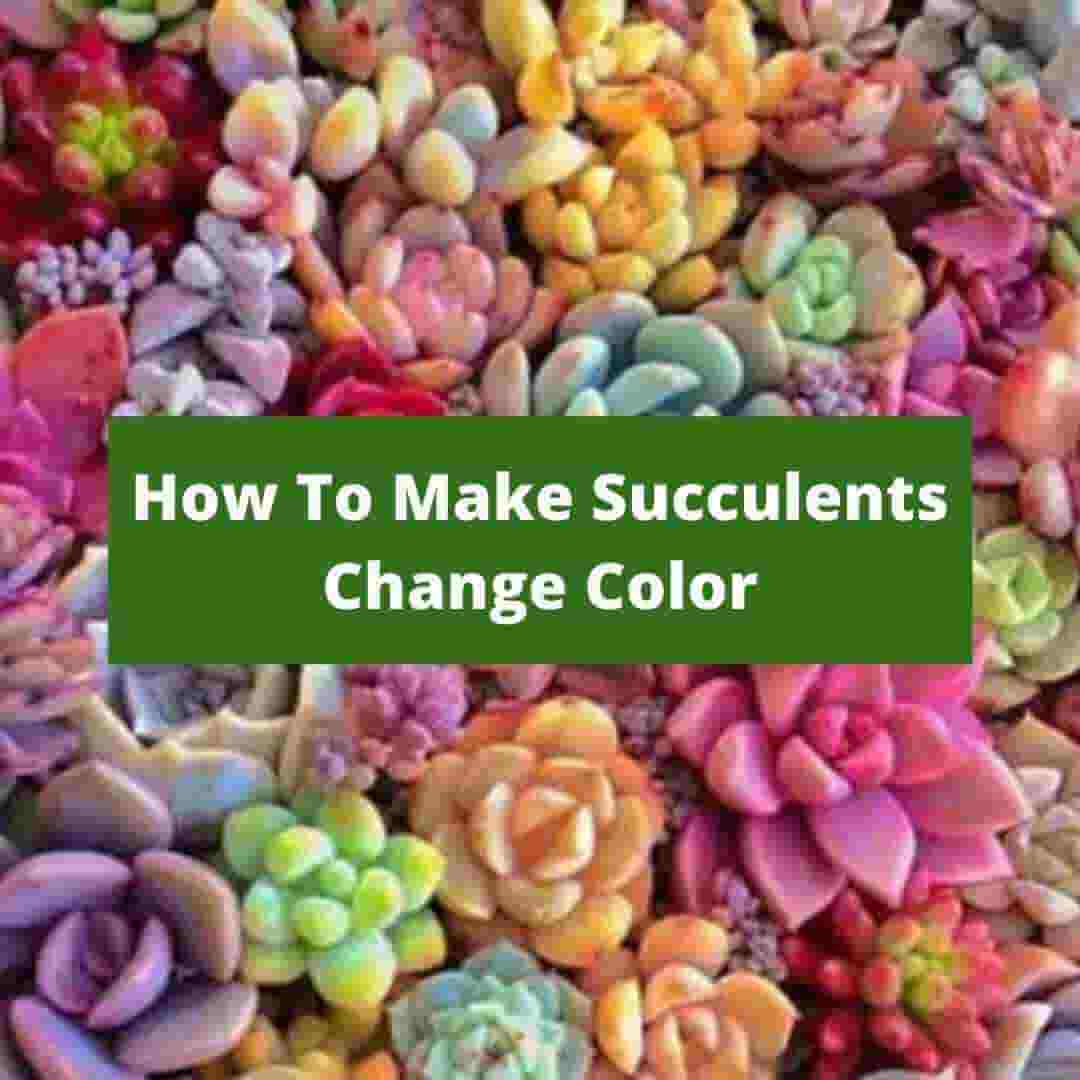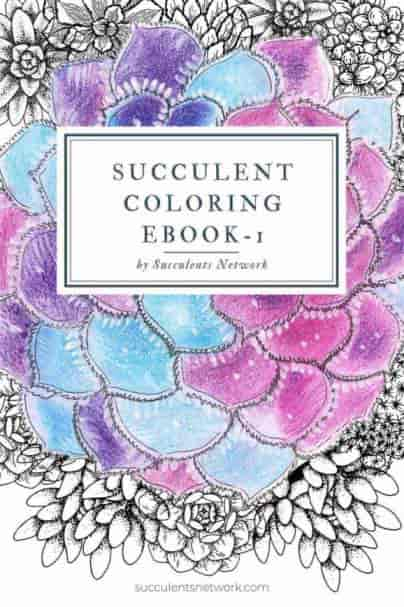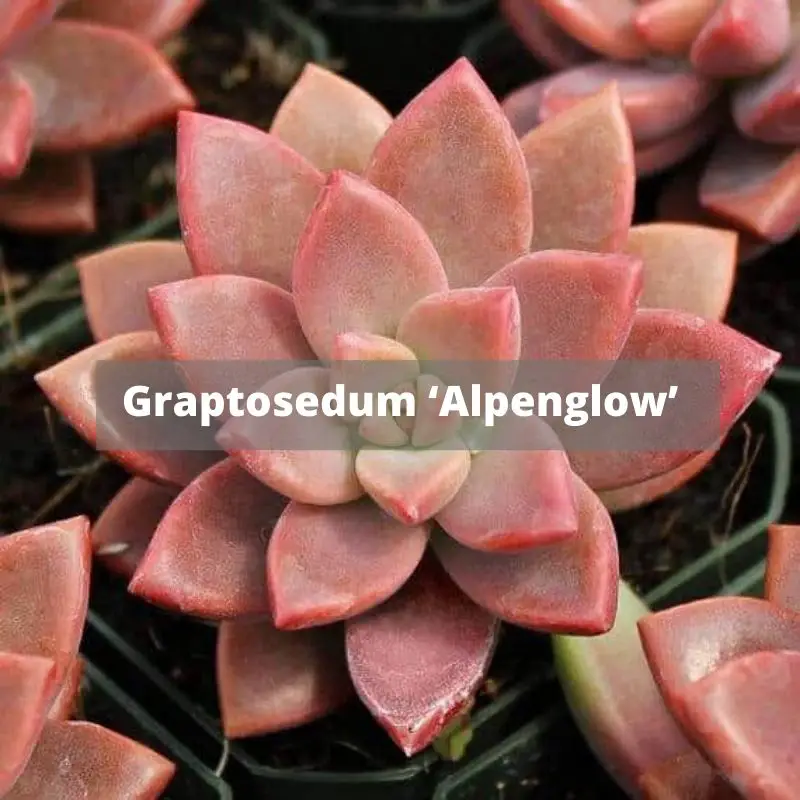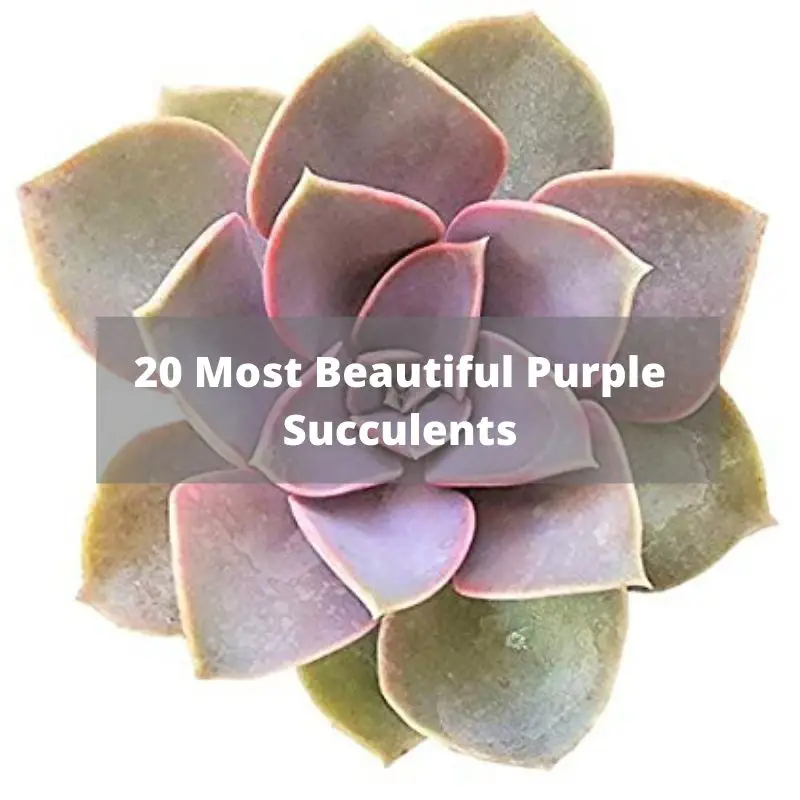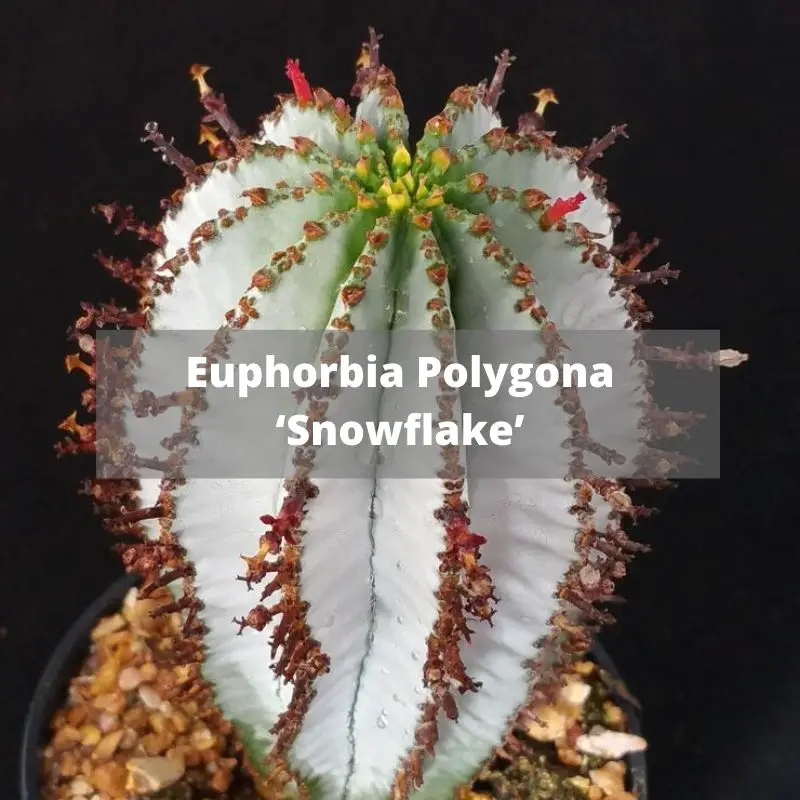You can use coffee grounds for indoor plants. Coffee ground is filled with nutritional benefits for your plants so much so that you can water your plants with coffee and they would be perfectly fine. However, water your plants regularly with coffee it will increase the plant’s risk of fungal diseases and stunt the plant’s growth.
You’ve noticed while making coffee at home or even at your local coffee shop that coffee grounds can quickly accumulate. In fact, most local coffee houses put out bags of used coffee. The great news is that all those coffee grounds can be utilized without being disposed of as waste. You can use the grounds for your indoor plants. Continue reading to learn more concerning coffee grounds and indoor plants.
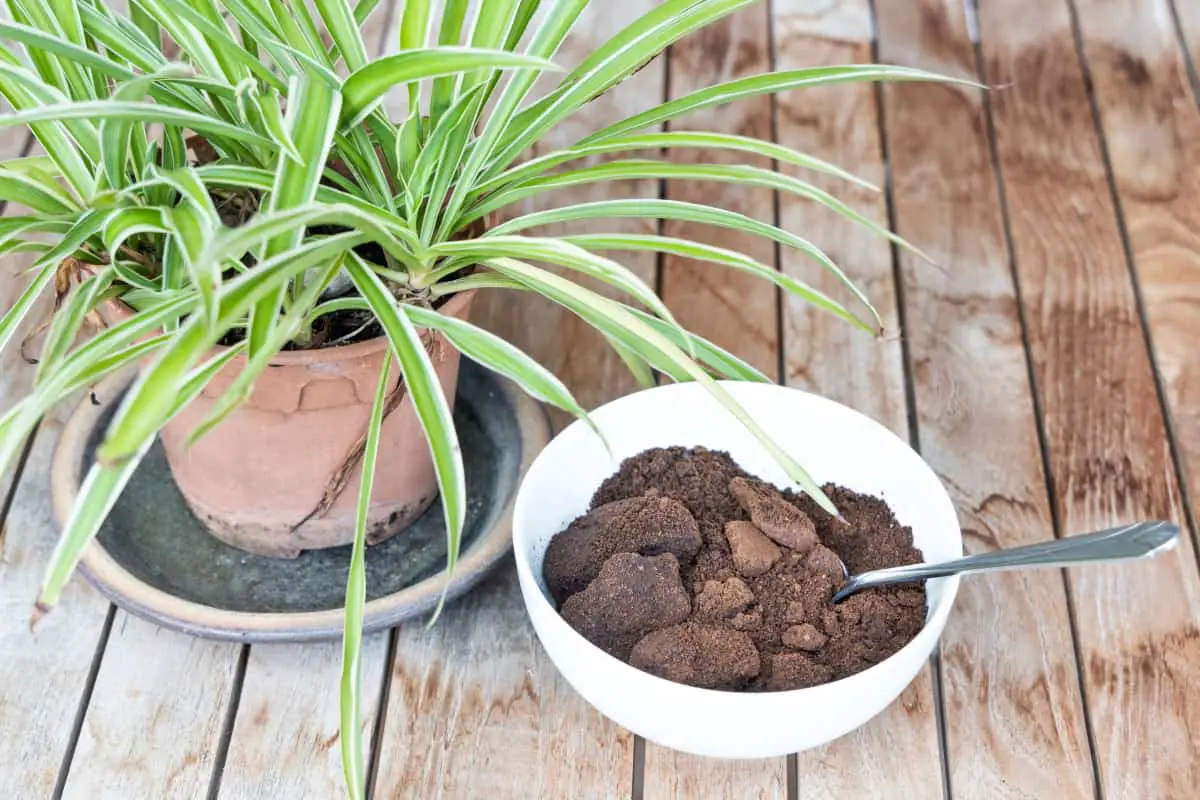
Picture via indoorflora
Using Coffee Grounds as Fertilizer?
Enriching indoor plants remains a very important aspect of indoor plant upkeep. Besides, there are many natural fertilizers that you might have thought of giving a try. One question many individuals normally ask about is whether coffee grounds can be utilized as fertilizer for indoor plants.
Yes, the coffee grounds can be used in fertilizing houseplants. In spite of this, it would be best if you compost them first. The direct application of the grounds to houseplant soil is detrimental. It can lead to unnecessary moisture retention, impair growth of the plants, and even fungal overgrowth. Besides being an incredibly cost-efficient fertilizer, Coffee grounds are a beneficial source of nutrients that houseplants can utilize efficiently. You’ll find in a different section details concerning how to utilize the grounds efficiently, without damaging your house plants.
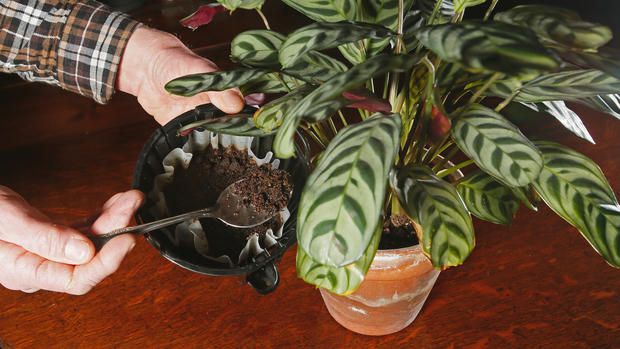
Picture via Pinterest
Why Use Coffee Grounds?
Coffee grounds are well-known as kitchen left-over item, packed with nutrients that the majority of people would just get rid of. However, bear in mind that the grounds are free, easily available, and they contain high nitrogen content. Nitrogen is one of the most important nutrients necessary for healthy plant growth. Furthermore, when you use coffee grounds on your houseplants, it’s an effective way of cutting down home waste production.
Many people have been making use of coffee grounds in their garden for many years with real success. For that reason, it’s just natural for people to try out using the grounds to fertilize their houseplants. As you’ll see from this article, this is certainly something you need to think through. Nevertheless, the use of coffee ground also comes with significant issues.
Are you struggling with propagation? This ebook is a how-to guide created for successful propagation. You will find detailed and helpful information for all the propagation methods. It is suitable for you whether you’re just starting with them or ready to advance your knowledge.
Indoor Plants that Like Coffee
Nearly all indoor plants have tropical geneses, where they grew well in the acidic soil of the forest. They respond well to the occasional cup of coffee. This is because their spirited tropical nature can deplete potting soil of its nutrients swiftly. Coffee being a longtime staple of compost bins, it imparts a fairly small quantity of acid as well as nitrogen into old potting soil. This gives it new life. Here are some of the popular house plants that like coffee:
1. Philodendron
Philodendron or Philodendrons, one of the most common types of indoor plants, comes in a large array of sizes, shapes, as well as foliage color. Having originated from the tropical areas of the Americas and the West Indies, this indoor plant grows well in moistness, acidic light, and diffuse light. For acidity, the soil PH should range between 5.5 and 6.0. Coffee makes a great home remedy for boosting up slow-growing philodendrons. This is achievable whether the grounds are simply watered with a solution of half water/tea or mixed in with the potting soil.
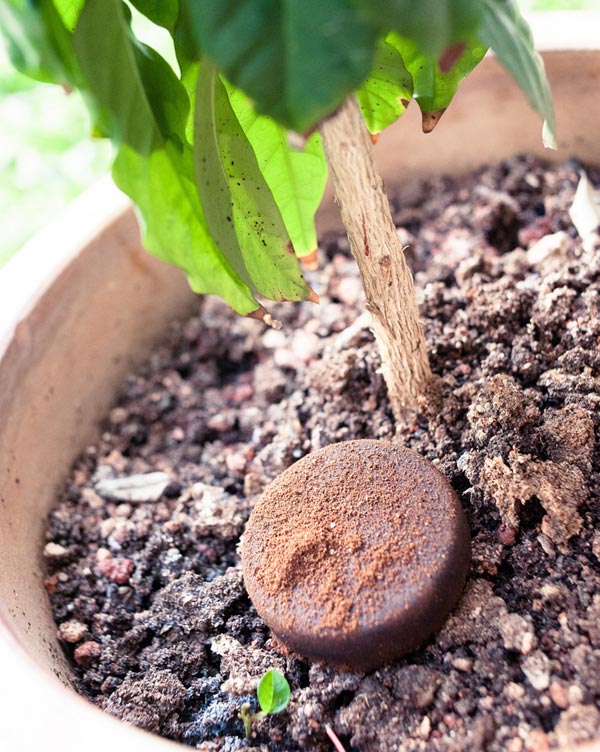
Picture via eatwell101
2. Spider Plant
Spider plant or Chlorophytum comosum is well-known as a hanging plant. The houseplant is popular for its pouring cascades of thin and multi-colored leaves. Native to South and West African origin, the Snake plant thrives in well-draining, mildly-acidic potting soil and moderate-bright light that is not direct. Infrequent watering through diluted coffee benefits the indoor plant. This helps achieve their ultimate soil pH ranging from 6.1 to 6.5. The suggested proportion of water to coffee is three parts of water to one part of coffee.

Picture via Amazon
3. Snake Plant
The Snake plant or scientifically known as Sansevieria trifasciata is recognized for being a low-maintenance houseplant and one that is tolerant of abandonment. On the other hand, the plant responds nicely to a cup of coffee administered once in a while. Having originated from tropical West Africa, the Snake plant is an indoor plant that thrives when provided with acidic soil. The soil pH should range between 4.5 and 7.0. Its erect and sword-shaped leaves pull off their distinguishing multi-colored look. This is achievable only if they are offered low to medium light and occasional watering with a coffee solution.
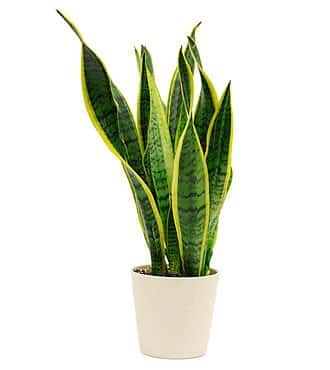
Picture via Amazon
4. Ghost Man
Ghost Man also called Pachypodium namaquanum, is a succulent plant native to the arid and rocky mountains of the Richtersveld in Northern Cape and Southern Namibia. The plant grows well in highly acidic soil having a pH of 3.5 to 5.0. However, under home cultivation, the indoor plant can endure much lesser acidity. The best way you can achieve an appropriate acid level is by offering strong coffee economically during the growing stint. Being a succulent plant, Ghost Man has a broad and fleshy stem coated in spines one-inch long.
Our printable succulent coloring book comes in the convenient 4×6″ (10x15cm). You can either print or use it in a digital platform from your phone, tablet, etc. Have fun!
5. Banana Plant
Every specie of banana (Musa) plant would thrive in acidic soil, most specifically indoor variations like torch banana and purple banana. The two bananas prefer a soil PH ranging from 5.0 to 6.5. Native to South Pacific and Southeast Asia, bananas are grown for their fruiting capability, as well as their dramatic tropical foliage. You can substitute a half coffee, half water mixture for water for the period of the growing season. Nevertheless, pure water must be provided in trivial volumes throughout the year.
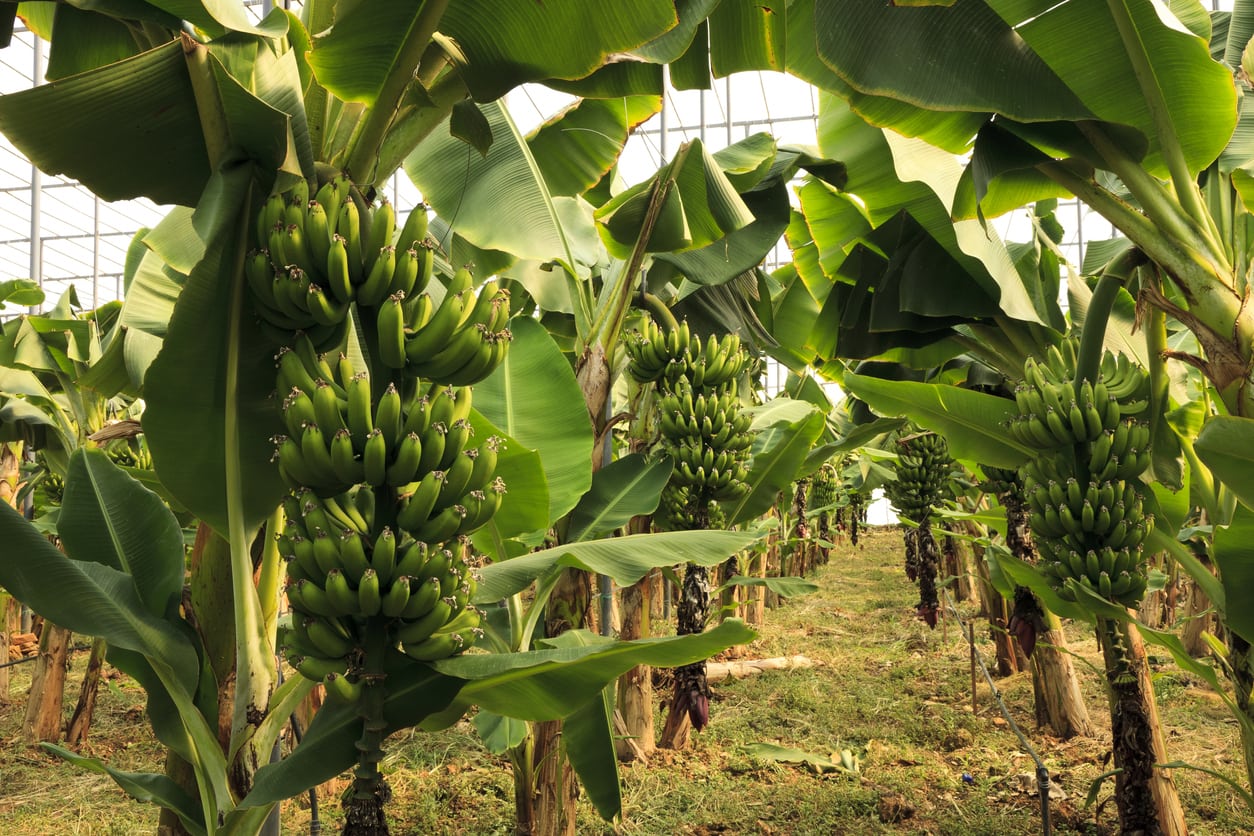
Picture via gardeningknowhow
How to Use Coffee Grounds to Fertilize Indoor Plants
Many people may well be inclined to adding coffee grounds right on top of the soil of their houseplants, which is not recommended. Adding the grounds directly to the top of the soil can bring about various problems. Nonetheless, there are numerous great ways through which you can use coffee grounds to fertilize your indoor plants. These include:
- Coffee in Compost;
Using coffee grounds to make compost is certainly the best way you can utilize them. Just add all the used grounds to your compost pile then wait until the compost is ready for use. The majority of house plants are native to the humid type of weather. With the tropical climate, they get most of the sustenance from decomposed organic matter produced by the thick undergrowth surrounding them.
The composite pile made at home mainly reconstructs this natural procedure. It will provide your indoor plants with ample nutrients to grow well. The coffee grounds contain high nitrogen content that will be balanced out by other constituents of the compost pile. The earthworms and microorganisms like the stuff and will quickly gobble it. This results in richer compost material. Given that diversity is vital for great soil health, the grounds should form just around 20% of your compost pile.

Picture via irishtimes
To use the compost, you can either apply it when repotting or add a thin layer to the topmost part of the soil. Also, you can work it into the top rare inches of the soil. When utilizing the homemade compost on your indoor plants, there are two very important things you must take into account.
First of all, using too much compost can result in foliage burn as well as symptoms of nutrient poisonousness. Make sure you add at the most just one inch to the pot to avoid this. Number two, given that compost, is rich in organic matter, it will retain water naturally. This can boost the chances of excessive watering. For this reason, you ought to bear this in mind and water moderately to avoid such problems.
- Liquid Coffee Fertilizer
You can make a compost tea using your coffee grounds that will work extremely well on your indoor plants.
There are numerous diverse ways through which you can make compost tea. One of the easiest ways is simply adding the coffee grounds filled with water. After that, let the coffee grounds soak for roughly 2 weeks. As they soak, ensure you’re stirring the mixture every few days for the best liquid coffee fertilizer.
When the coffee grounds begins breaking down, it will release nutrients such as nitrogen, magnesium, and potassium into the water. All these nutrients are building blocks for plant growth. Additionally, once the coffee breaks down, it will be a rich breeding ground for valuable bacteria. By watering your indoor plants, you not only boost the health of the soil but plants as well.
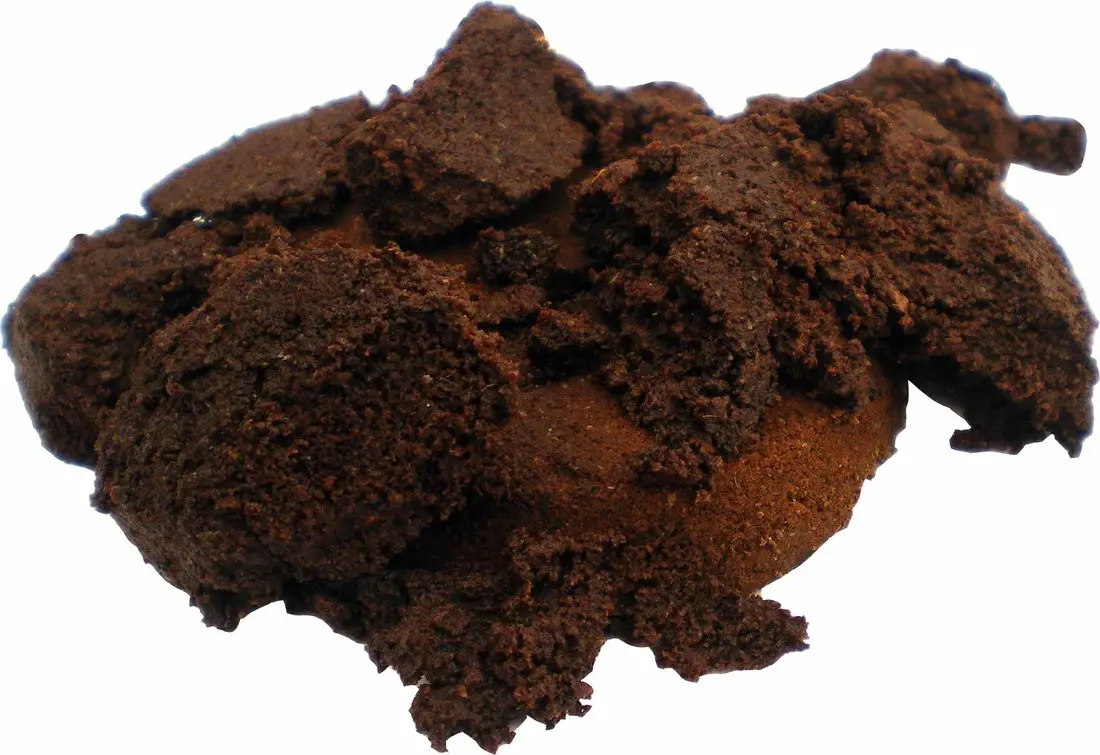
Picture via ecobride.weebly
- Add Grounds to the Mixture (potting) When Repotting
Considering that the coffee grounds are an organic material, they slowly release nutrients as they decay in the soil. And so, you can utilize grounds as a gradual release fertilizer. This is when combined with the standard potting mix you use for your plants.
Despite the fact there are possibly one or two problems associated with this, depending on the plant, it can be a continuous source of nutrient content for a couple of months. Coffee grounds are a natural source of fertilizer for indoor plants. However, you’ll have to use them appropriately to achieve the best results.
The grounds have a big amount of nitrogen by volume, compared to potassium, and phosphorus. Then the houseplants that have rather high requirements for potassium and phosphorus might not grow well if you only use coffee grounds as fertilizer. Read on to know more concerning the disadvantages of using the grounds in our potting mix.
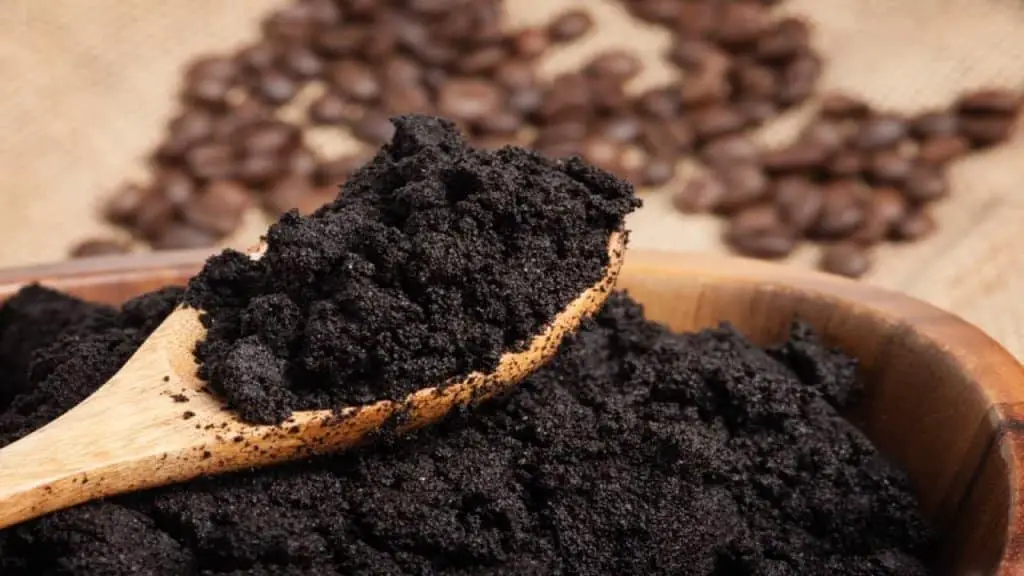
Picture via plantgardener
Disadvantages of Using Coffee Grounds to Fertilize Houseplants
Even as you can make use of coffee grounds to fertilize your houseplants, you must acquaint yourself with the negative aspects as well. Here are some of the problems associated with using coffee grounds to fertilize houseplants:
- Excess Retaining of Moisture
Coffee grounds are very good at moisture retention. This is brought about by their organic nature coupled with the fine particles that act like a sponge, hence holding onto moisture in the soil. This comes as a disadvantage since the most common problem with caring for houseplants is overwatering. Thus, adding coffee grounds to the soil meaningfully enhances the risks that you’ll damage your indoor plants via overwatering.
Just in case you utilize the grounds on your houseplants, you can lessen the chances of overwatering by changing the composition of the soil that you use. You can add more perlite soil coarse sand to the potting mixture to increase drainage. This lets the soil lose drain water faster after watering, hence lessening the risk
of not only overwatering but also root rot. You could also use a small and porous pot.
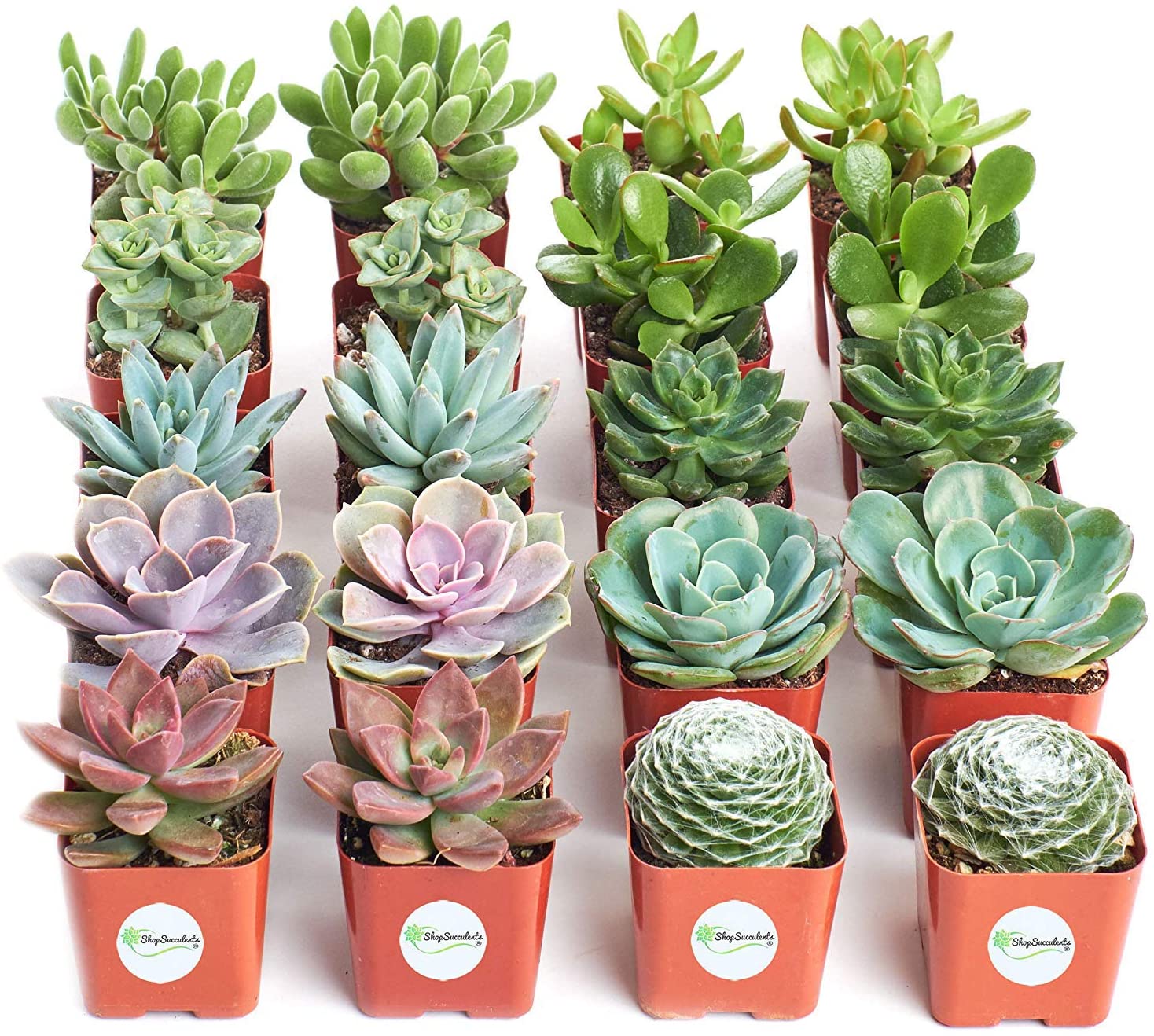
Picture via Amazon
- Stimulates Fungal Growing
Fungal growth mostly takes place if you add coffee grounds to the soil surface of your indoor plants. Seeing as the grounds provide the fungal organisms with an ideal breeding ground, it can result in fungal disease in your plants. Fungal disease can do your plants a lot of harm. The most effective way to handle this problem is by making sure the coffee grounds are worked well into the soil. Preferably, you can use the grounds compost, or add the coffee grounds when repotting to reduce the risk.
- Draws Pests
Although the use of coffee grounds deters some pests, several pests and insects will still be attracted by the conditions the coffee grounds offer in the soil of your indoor plants. Once more, this emphasizes why you should not add the grounds to the surface of the soil. In case you’d like to use coffee grounds to fertilize houseplants, then using the grounds to make compost is the best option.
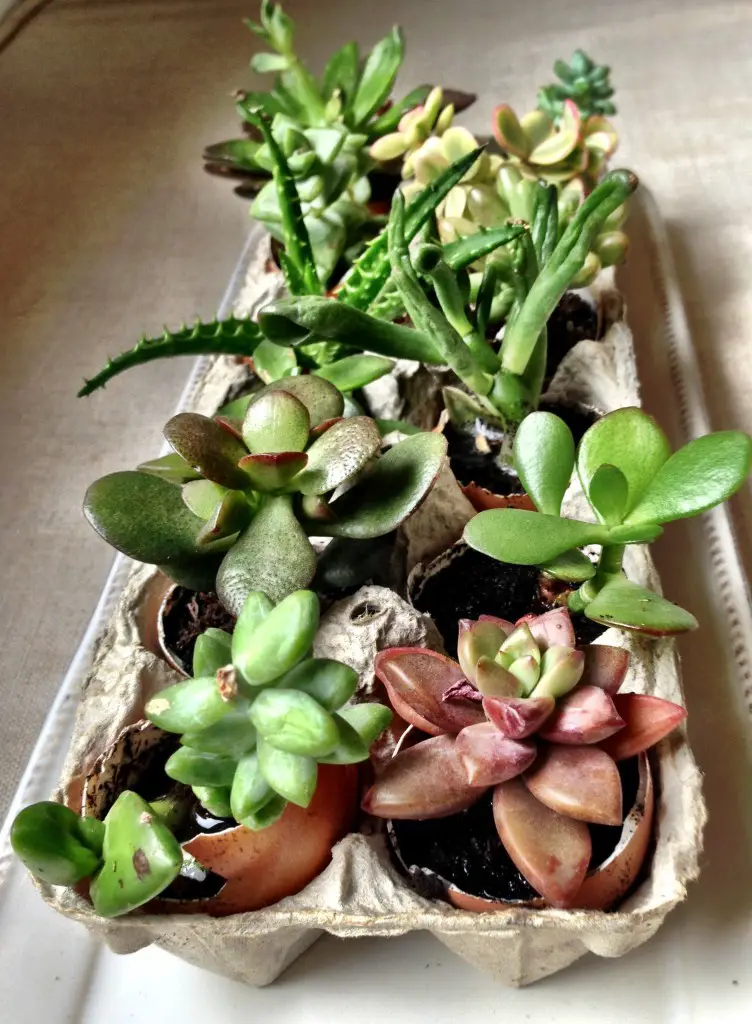
Picture via sharingthyme
Much Better Options Than Coffee Grounds
While using coffee grounds as fertilizer benefits your indoor plants, there are numerous other better synthetic and natural ways to fertilize your houseplants. Besides, you’re better making use of coffee grounds for your outdoor plants or utilizing this kitchen leftover differently.
To Sum Everything Up
Although you can make use of coffee grounds to fertilize houseplants, you’ve got to evade the snags accompanying this. Moreover, using coffee grounds would be best for your outdoor garden than for indoor plants. However, if you still would like to use the grounds for houseplants, ensure you make compost. It’s much more likely to result in a positive outcome.

